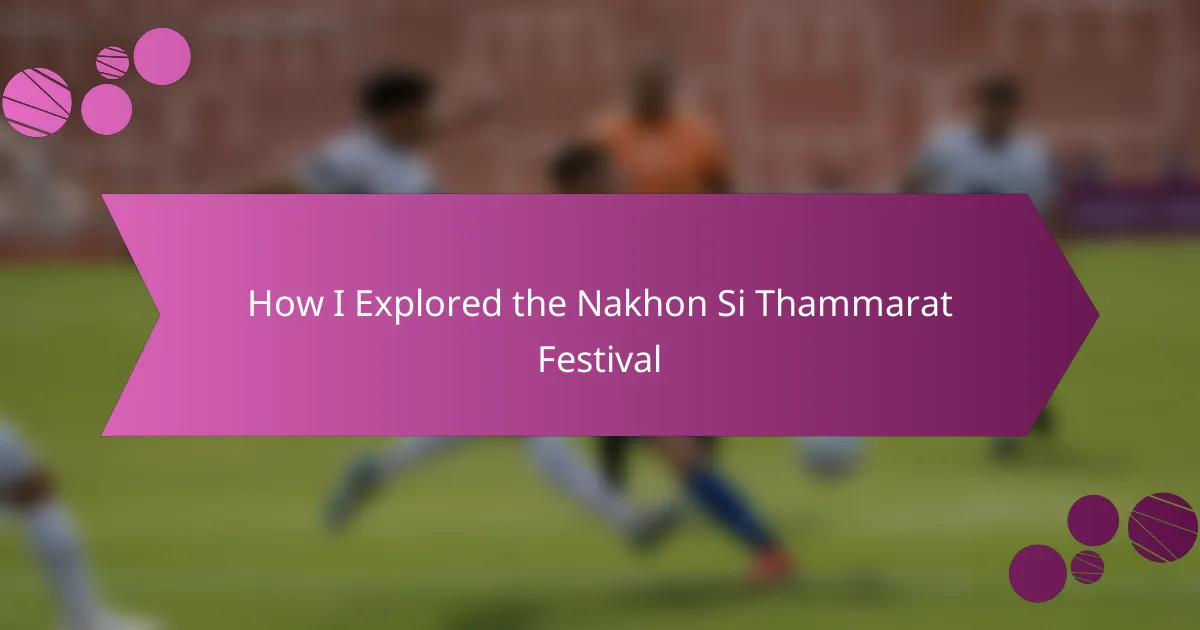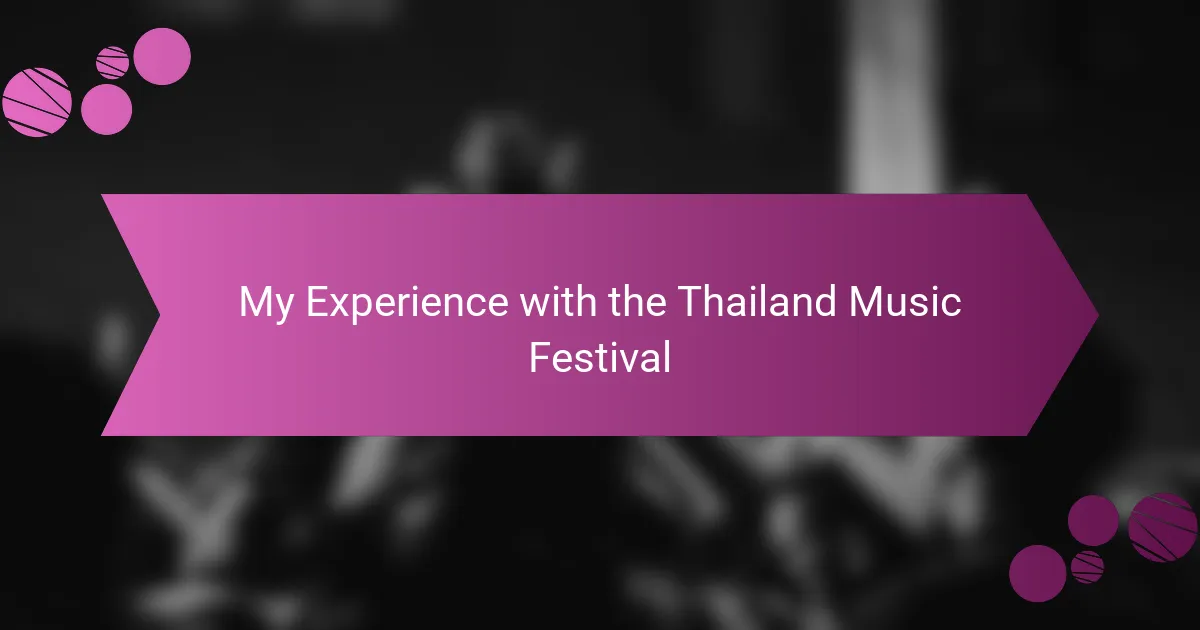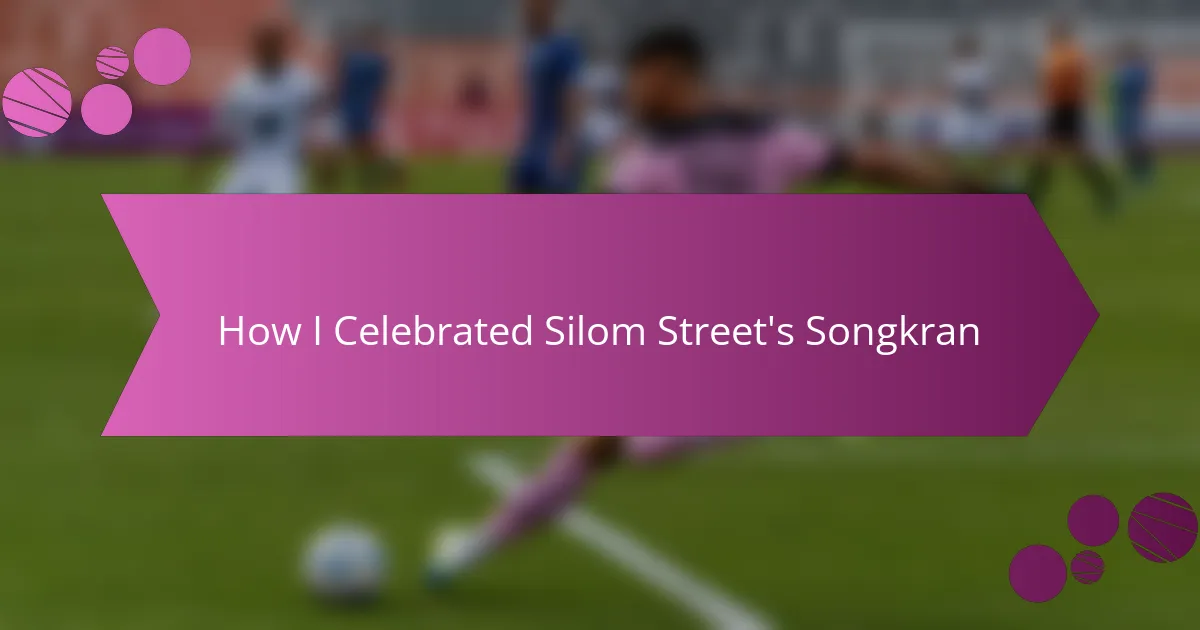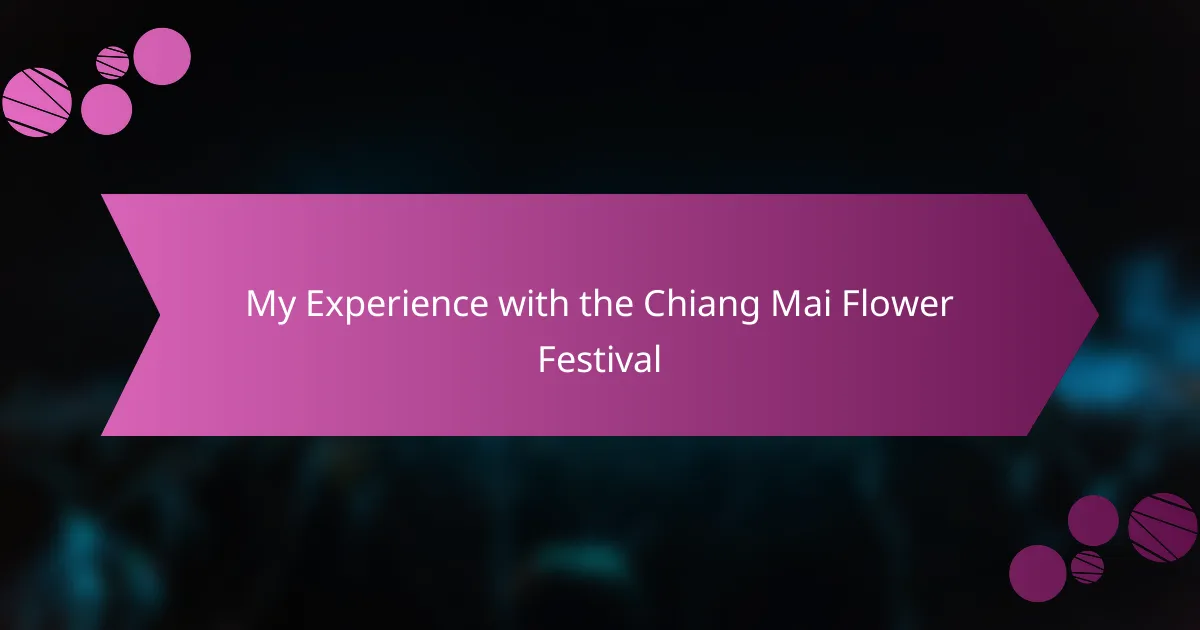Key takeaways
- Thai music festivals celebrate a blend of traditional and contemporary cultural expressions, fostering community and connections through music.
- The Nakhon Si Thammarat Festival has deep historical roots dating back to the 14th century, originally honoring Buddha and local deities.
- Festival highlights include vibrant performances, traditional crafts, delicious street food, and active community participation, creating a joyful atmosphere.
- Attendees are encouraged to engage with locals for a richer experience, ensuring comfort and hydration during the festivities.
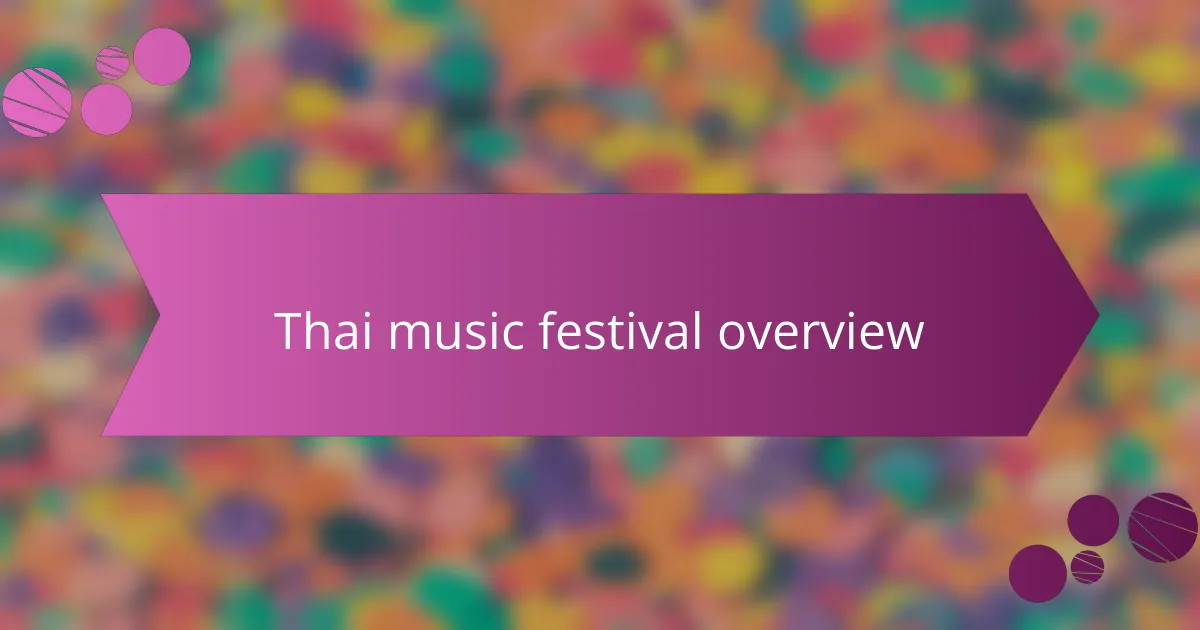
Thai music festival overview
Thai music festivals offer a vibrant tapestry of cultural expression, showcasing not just traditional sounds, but also contemporary vibes that resonate with diverse audiences. I remember the first time I attended one; the energy in the air felt electric, as musicians and attendees alike connected through the universal language of music. Isn’t it fascinating how melodies can bridge gaps between cultures?
At these festivals, you’ll find a colorful mix of local artists and international acts, creating an enriching experience for all. I often find myself captivated by the unique rhythms and instruments, like the ranat ek, a traditional Thai xylophone. Have you ever marveled at how music can transport you to another time and place, evoking memories and emotions with just a few notes?
Moreover, Thai festivals emphasize community, bringing people together in celebration of heritage and creativity. I recall dancing with locals, feeling a part of something much larger than myself. It’s amazing how such gatherings foster a sense of belonging and appreciation for our shared humanity, don’t you think?
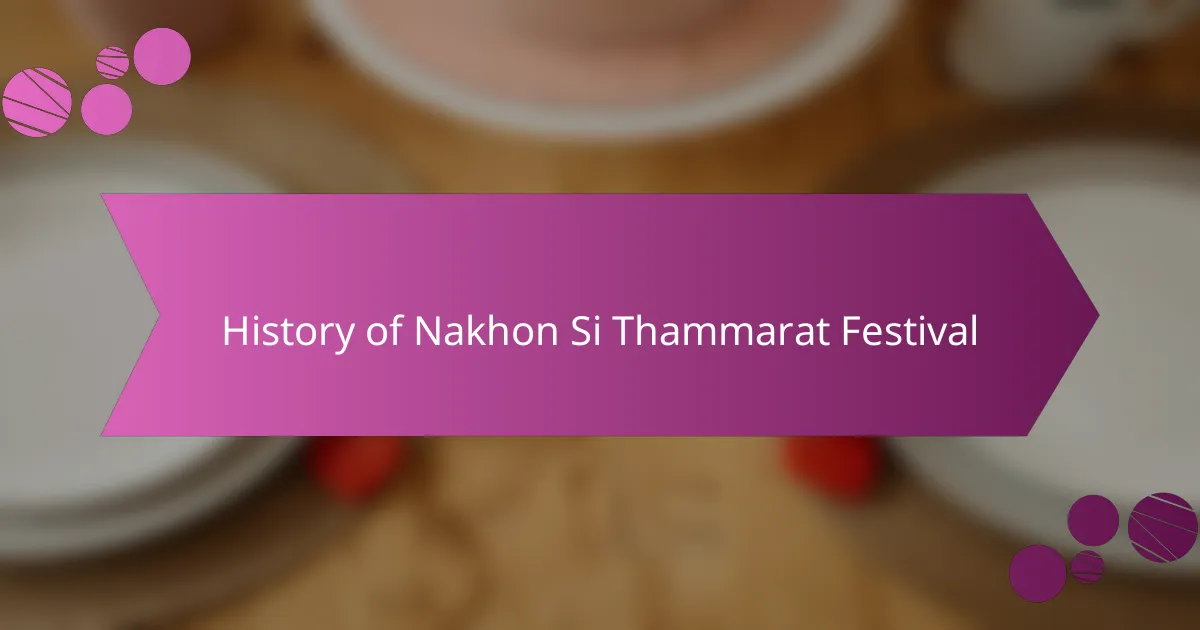
History of Nakhon Si Thammarat Festival
The Nakhon Si Thammarat Festival has rich historical roots that date back several centuries, celebrating the cultural heritage of Southern Thailand. When I first learned about the festival, I felt a deep connection to its origins, particularly its ceremonial ties to the ancient traditions of the region. The vibrant performances and heartfelt offerings reflect the local community’s respect for their ancestors and their devotion to preserving their unique identity.
- The festival is believed to have originated in the Ayutthaya period, around the 14th century.
- It was initially a religious event honoring the Buddha and local deities, showcasing the blend of [censured] and culture.
- Over the years, the festival has evolved, incorporating various local customs, music, and dance forms.
- Today, it attracts thousands of visitors, both local and international, fostering a sense of unity and cultural pride among the people of Nakhon Si Thammarat.
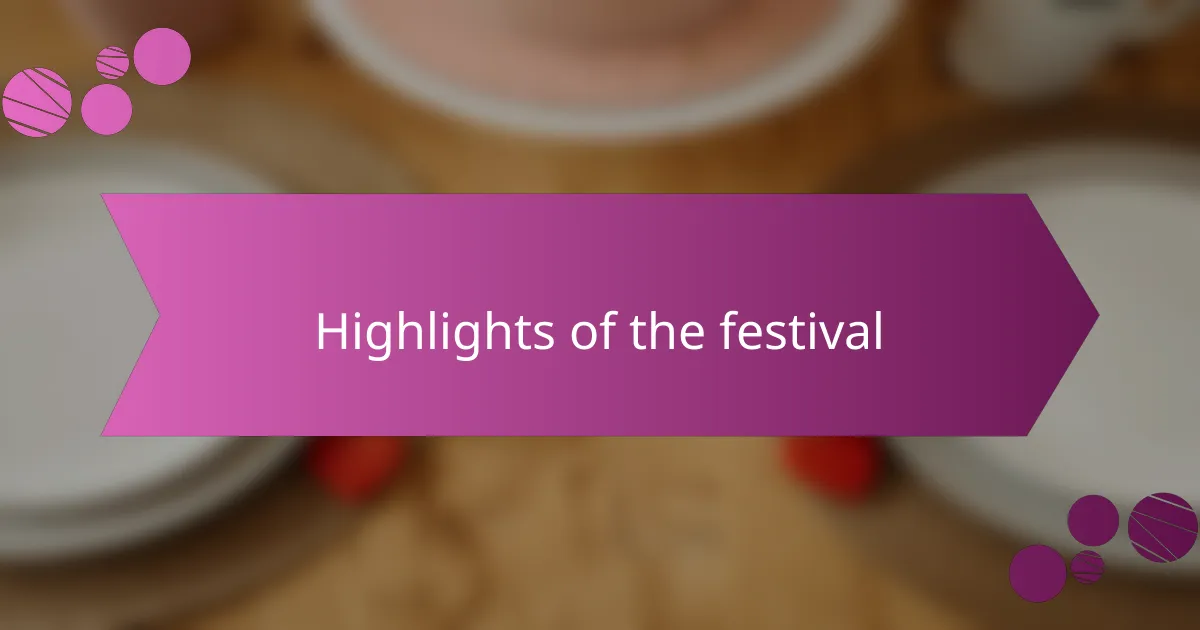
Highlights of the festival
The Nakhon Si Thammarat Festival is a vibrant celebration that truly showcases the rich cultural tapestry of Thailand. As I wandered through the bustling streets, I was struck by the colorful displays of traditional crafts and the melodies of local musicians filling the air. The sense of community was palpable; you could see families enjoying the festivities together, laughter ringing out as children danced along to the music.
One of the highlights for me was witnessing the mesmerizing performances by local artists, who shared their talent and passion through song and dance. Each performance seemed to tell a story, making me feel more connected to the culture and its heritage. The taste of authentic Thai street food added another layer to the experience, with aromatic flavors that left me craving more.
Highlights of the Festival:
– Traditional music performances that resonate with historical significance.
– Stunning displays of local crafts, perfect for immersing in Thai culture.
– Delicious street food options, offering authentic flavors unique to the region.
– Community engagement through workshops and participatory events.
– Joyful atmosphere with families and tourists mingling together, creating a sense of unity.
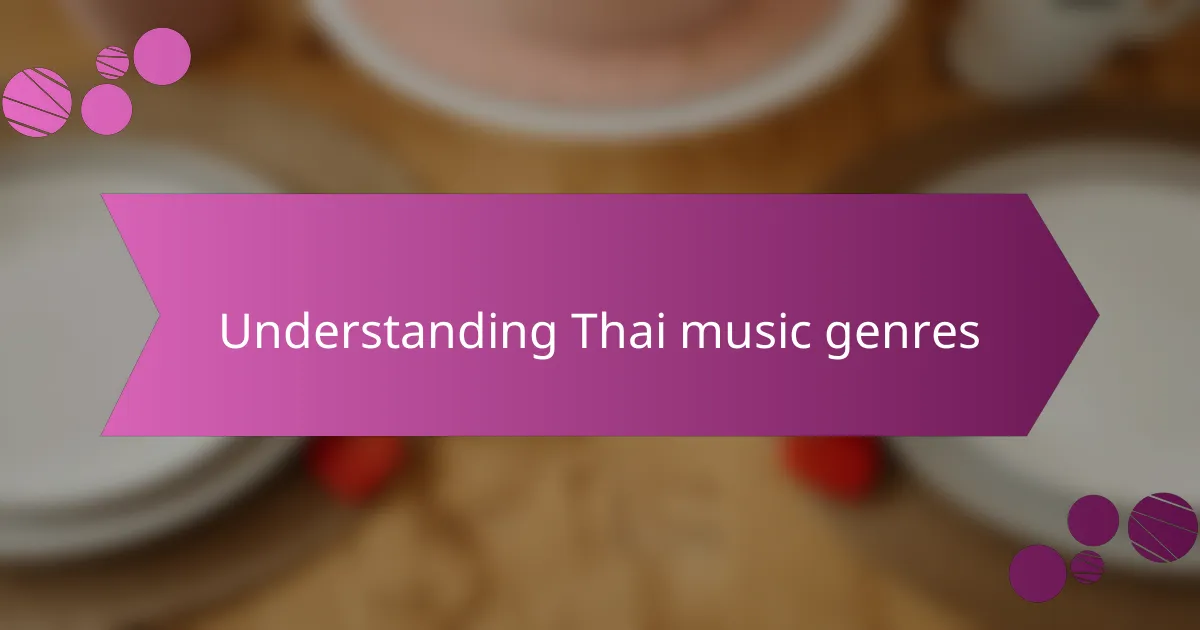
Understanding Thai music genres
Thai music is incredibly diverse, reflecting the rich tapestry of its culture. From traditional forms like Luk Thung, which tell stories of rural life, to the energetic beats of Mor Lam from the Northeast, there’s a genre for every emotion and occasion. I remember attending a lively performance at the festival where the vibrant sounds of Mor Lam swept me off my feet and had everyone dancing along, creating an unforgettable sense of community.
During my exploration of the festival, I found myself captivated by the beauty of traditional Thai instruments like the ranat (a xylophone) and the phin (a lute). The way these instruments blend harmoniously really showcases the skill and emotion of the musicians. Each performance seemed to tell its own story, igniting memories and feelings that resonated deeply within me.
Here’s a comparison of a few notable Thai music genres:
| Genre | Description |
|---|---|
| Luk Thung | A popular genre characterized by its storytelling lyrics and focus on rural life, often featuring folk instruments. |
| Mor Lam | A traditional music style from Northeast Thailand known for its lively rhythms and improvisational singing. |
| Khmer Classical | A sophisticated genre deeply rooted in ancient traditions, often performed in royal ceremonies with classical instruments. |
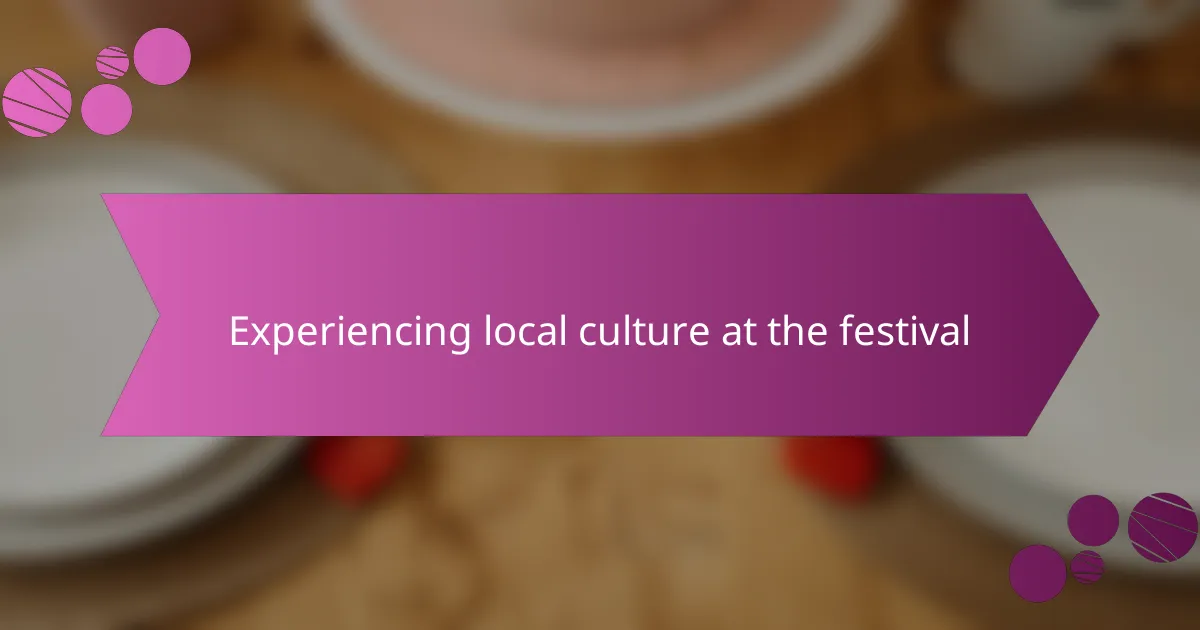
Experiencing local culture at the festival
As I strolled through the vibrant stalls at the festival, the air buzzed with the sounds of laughter and traditional melodies. It was heartwarming to see families mingling, creating a rich tapestry of local culture alive around me. I couldn’t help but feel a sense of pride and belonging, as if I were embraced by a community that reflects its history through each colorful display.
One moment that stood out for me was when a group of children participated in a traditional dance. Their infectious joy and laughter reminded me of my own childhood celebrations back home. Have you ever witnessed such pure joy? It made me realize how festivals like this keep cultural traditions alive, connecting generations through music, dance, and shared experiences.
Sampling the traditional foods was a delightful journey for my taste buds. Each dish told its own story, offering flavors steeped in history and local pride. I vividly recall trying a spicy herbal salad that was so refreshing it made me rethink my views on Thai cuisine. These culinary treasures added an unforgettable layer to my understanding of the region’s culture.

Tips for attending the festival
Planning to attend the Nakhon Si Thammarat Festival? Comfort is key! I recommend wearing light, breathable clothing, as the warm weather can really keep you on your toes while you explore. I remember my first festival; wearing shorts and a comfy t-shirt made it easy to enjoy all the vibrant activities without feeling weighed down. Have you considered what shoes to wear? Comfortable footwear is essential, especially if you want to dance along or walk through various stalls.
Staying hydrated is another crucial tip. When I was there, I appreciated the various local drinks available, but I also made sure to drink plenty of water. When you’re immersed in all the excitement, it’s easy to forget to hydrate. Think about bringing a refillable water bottle too; it’s eco-friendly and ensures you’re always prepared for impromptu dance sessions in the midday sun.
Lastly, don’t hesitate to engage with the locals! I found that striking up conversations often unveiled hidden gems of information about the festival. From learning about traditional music to discovering the best street food stalls, locals can enhance your experience in unexpected ways. Have you ever had a spontaneous chat with someone that lead to an unforgettable moment? I recommend diving into those opportunities at the festival; they can transform your visit from merely enjoyable to deeply memorable.
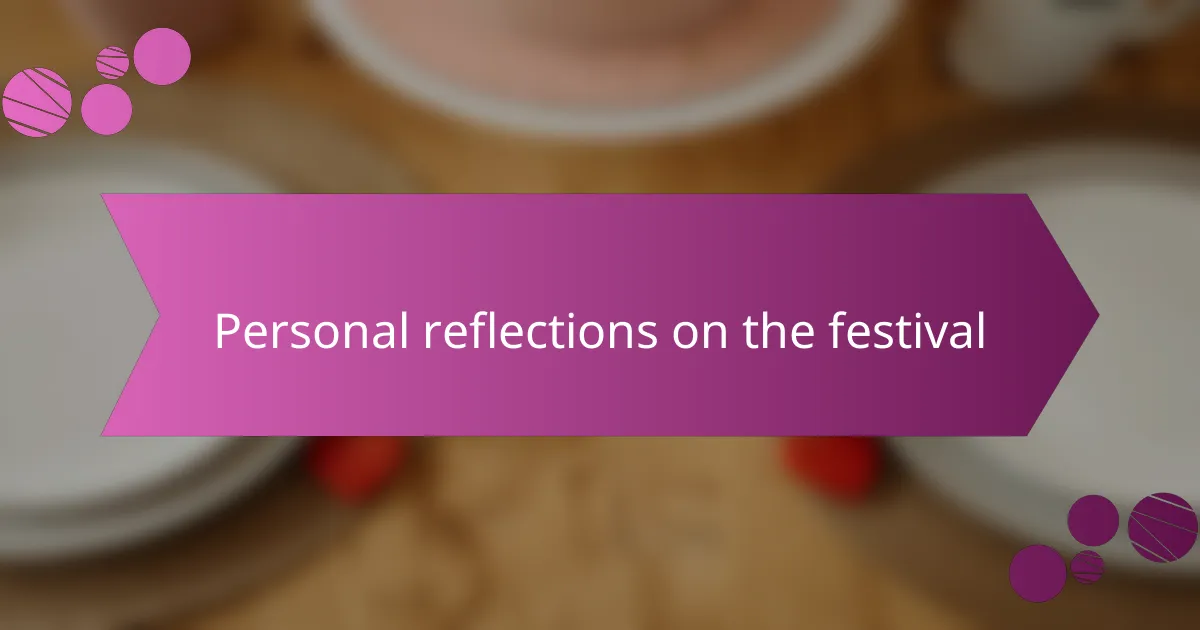
Personal reflections on the festival
Reflecting on my time at the Nakhon Si Thammarat Festival, I can’t help but cherish the vivid memories that linger. The way the community came together, as families shared laughter and stories amidst the vibrant chaos, felt like stepping into a beautiful painting. Have you ever experienced that incredible sense of belonging that makes you feel as though you’re part of something truly special? For me, that connection was undeniable.
One of the most touching moments was when a local elder shared stories about the festival’s history and its significance. Listening to him speak, I could almost feel the weight of time and tradition. It made me realize how much these gatherings are rooted in shared memories and cultural pride. Isn’t it profound how narratives can weave through generations, reminding us of our shared humanity?
The music itself was a vibrant expression of emotion that day, resonating deep within me. As I watched performers pour their souls into each note, I was reminded of my own passion for music. In that moment, I came to appreciate how universal the language of music truly is. Have you ever been in a crowd where the rhythm made you forget everything else? It’s moments like these that stay with you long after the last note fades away.
